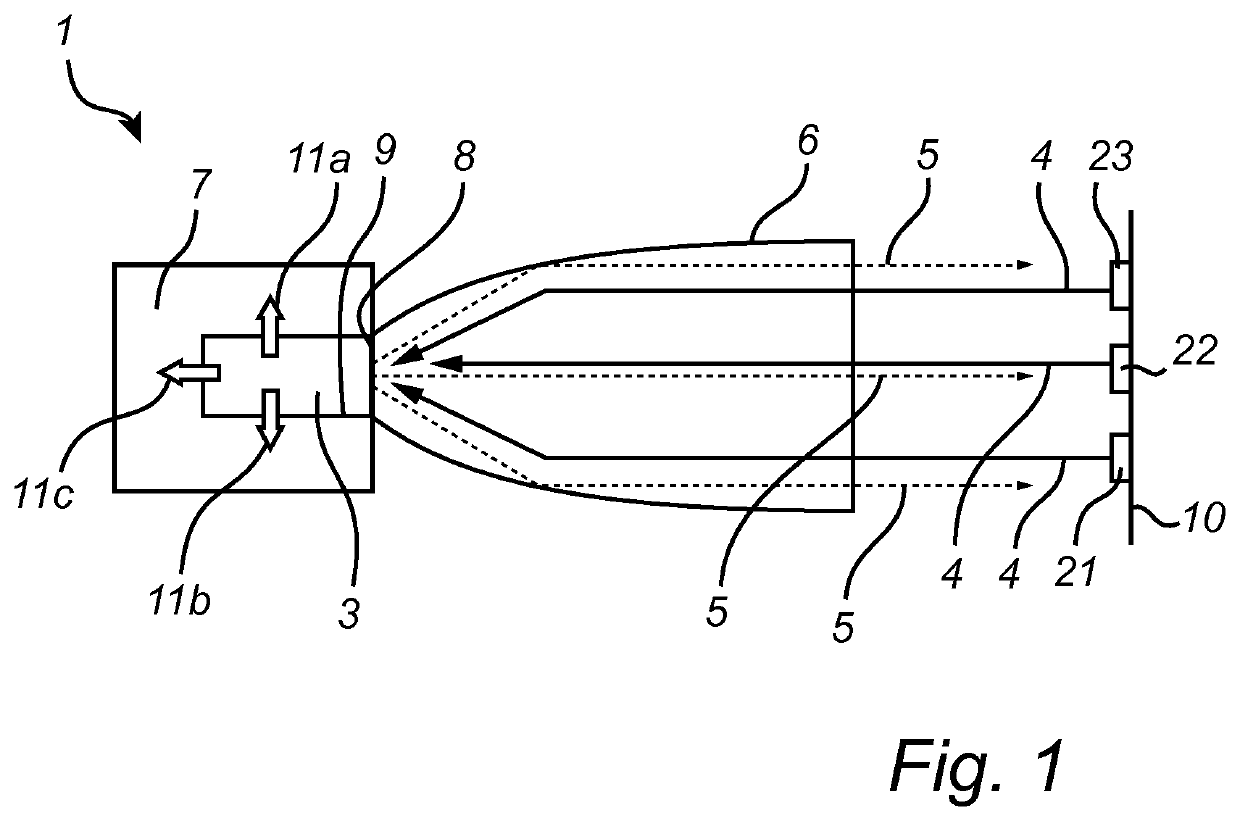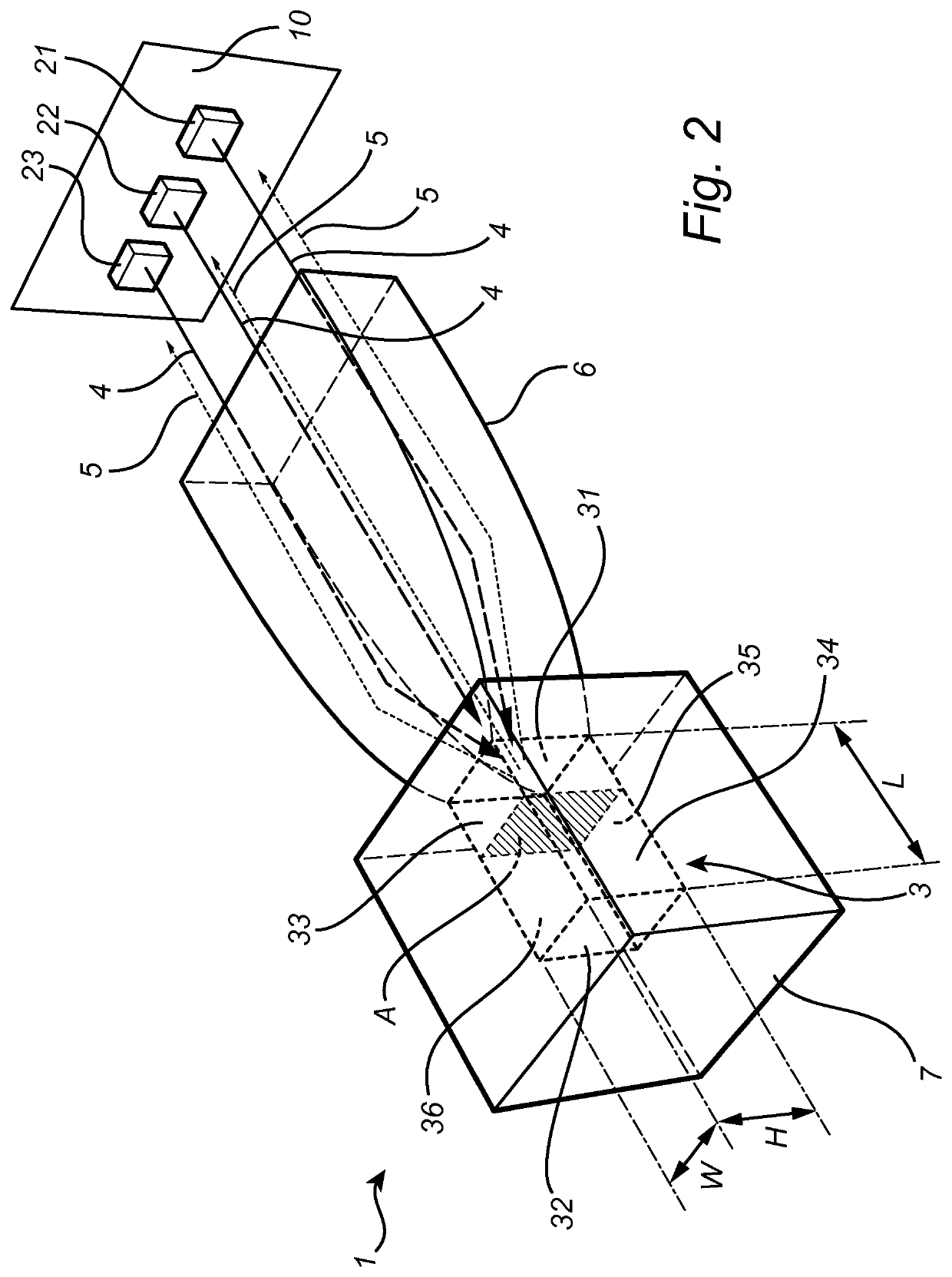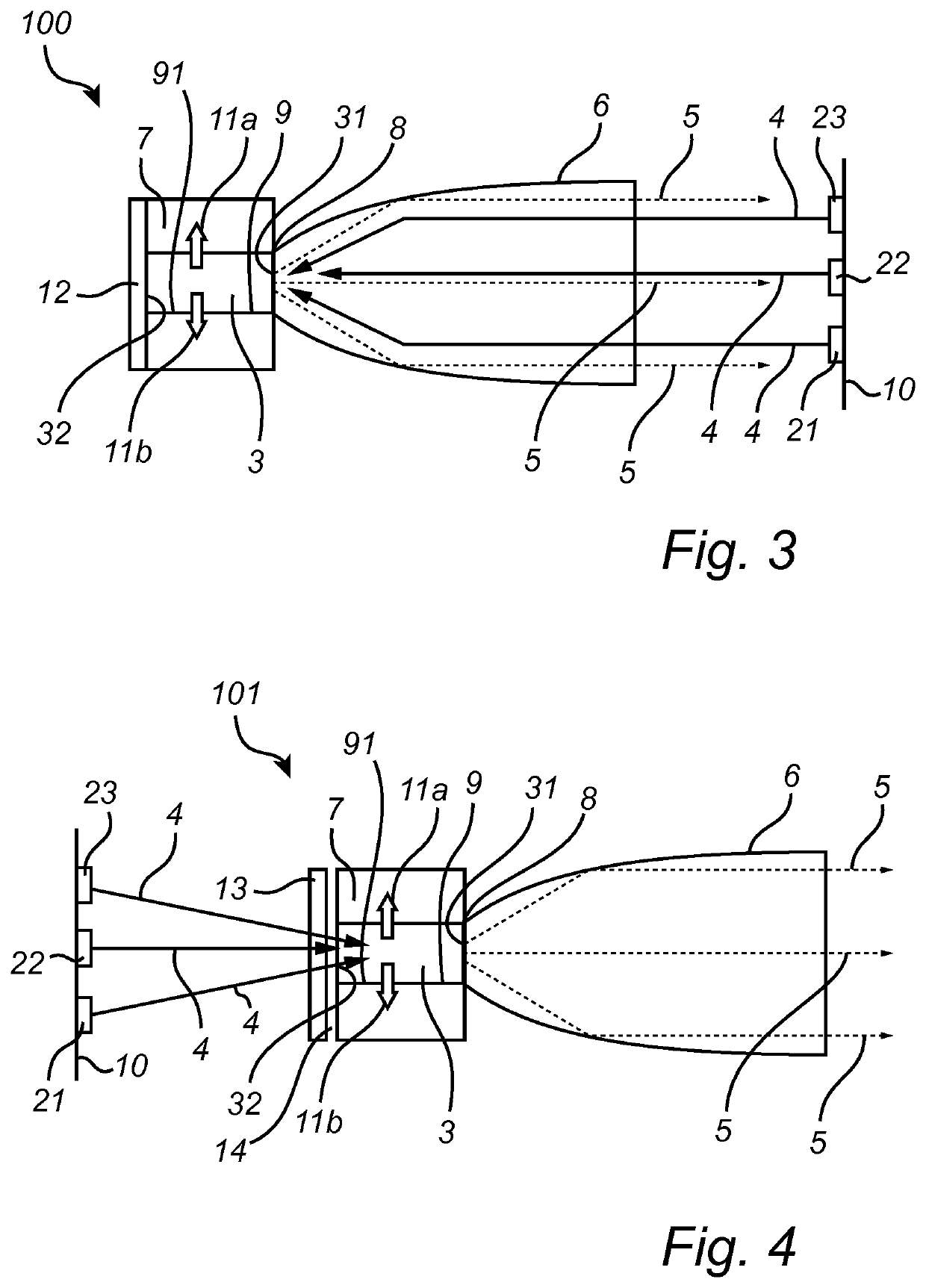Light emitting device
a technology of light-emitting devices and light-emitting components, which is applied in the direction of semiconductor lasers, lighting and heating apparatus, instruments, etc., can solve the problems of moving parts, reliability and/or safety risks, wear and tear, etc., and achieves improved reliability and efficiency, simple construction, and more robust and safe
- Summary
- Abstract
- Description
- Claims
- Application Information
AI Technical Summary
Benefits of technology
Problems solved by technology
Method used
Image
Examples
example —
Example—Measurements
[0114]FIGS. 5 to 13 illustrate optical simulations made on an exemplary light emitting device according to the invention. The optical ray-trace simulations were made on a light emitting device 1 of the type shown in FIGS. 1 and 2 and comprising a rectangular rod-shaped luminescent element 3 with a heat sink element 7 on five faces 32, 33, 34, 35, 36 and, as a focusing optical element 6, a glass compound parabolic concentrator (CPC) attached to the first face 31. The configuration was modeled in reflective mode, that is, the CPC is used both for injecting the laser light 4 and for extracting the converted light 5 from the luminescent element. The luminescent element 3 used was a YAG ceramic luminescent element. The laser light 4 injected into the luminescent element 3 was blue and the converted light 5 green or yellow.
[0115]First, the heat load in the YAG ceramic luminescent element was determined by the conversion, i.e. absorption of blue light. The blue light ab...
PUM
| Property | Measurement | Unit |
|---|---|---|
| refractive index | aaaaa | aaaaa |
| refractive index | aaaaa | aaaaa |
| refractive index | aaaaa | aaaaa |
Abstract
Description
Claims
Application Information
 Login to View More
Login to View More - R&D
- Intellectual Property
- Life Sciences
- Materials
- Tech Scout
- Unparalleled Data Quality
- Higher Quality Content
- 60% Fewer Hallucinations
Browse by: Latest US Patents, China's latest patents, Technical Efficacy Thesaurus, Application Domain, Technology Topic, Popular Technical Reports.
© 2025 PatSnap. All rights reserved.Legal|Privacy policy|Modern Slavery Act Transparency Statement|Sitemap|About US| Contact US: help@patsnap.com



